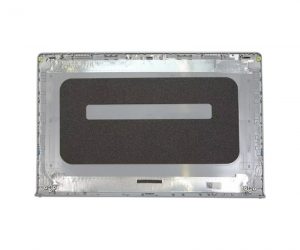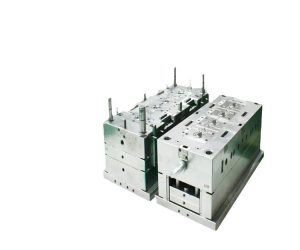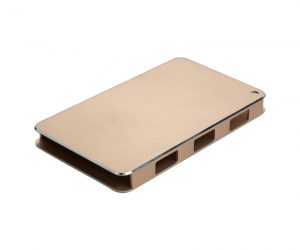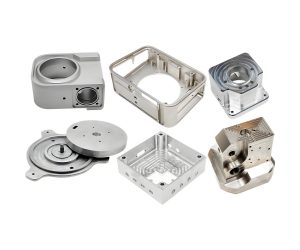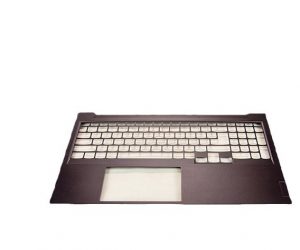The longevity and efficacy of injection molding operations hinge critically on a proactive and rigorously executed maintenance regimen. Failure to adhere to stringent protocols results not only in diminished product quality and increased downtime, but also accelerates the inevitable degradation of the mold itself, leading to premature and costly replacement. The following represents a non-exhaustive, yet crucial, framework for optimizing injection mold lifespan and performance:
I. Precision Cleaning and Surface Integrity: Post-production cleaning transcends mere surface wiping. It demands meticulous removal of polymer residue, employing solvents meticulously selected for compatibility with the mold's material composition – avoiding aggressive chemicals that could compromise its structural integrity. Ultrasonic cleaning may be necessary for intricate geometries. Regular assessment of surface finish using appropriate metrology is paramount.
II. Tribological Optimization: Lubrication is not a simple application; it's a precisely calibrated process. The selection of lubricants must consider factors such as operating temperature, polymer type, and the specific material of the mold components. Insufficient lubrication leads to increased friction, premature wear, and potential scoring. Conversely, excessive lubrication can contaminate the molded parts. Regular analysis of friction coefficients and wear rates is crucial.
III. Predictive Maintenance through Advanced Diagnostics: Routine visual inspection is insufficient. Employ non-destructive testing methods (NDT), such as ultrasonic inspection or thermal imaging, to detect subsurface flaws, fatigue cracks, or incipient failures before they manifest as catastrophic mold failure. Data-driven predictive maintenance models, leveraging historical maintenance records and sensor data, should be implemented.
IV. Thermodynamic Control and Optimization: The cooling system is not merely ancillary; it's the critical determinant of cycle time and part quality. Regular flushing, leak detection, and optimization of coolant flow rates are essential. Advanced control systems, incorporating real-time temperature monitoring and feedback loops, are necessary for maintaining optimal thermal stability and preventing thermal shock.
V. Operational Parameter Optimization: Blind adherence to manufacturer-specified cycle limits may be suboptimal. A scientifically rigorous approach, employing Design of Experiments (DOE) methodologies, should be used to determine the optimal operating parameters that maximize throughput while minimizing wear and tear.
VI. Storage and Environmental Control: Mold storage is not simply a matter of placing it in a warehouse. It demands a controlled environment, free from corrosive agents, particulate contamination, and excessive temperature fluctuations. Appropriate protective coatings and desiccant packs may be necessary.
VII. Root Cause Analysis and Corrective Action: Defect analysis must transcend simple observation. Employing statistical process control (SPC) techniques and failure mode and effects analysis (FMEA) to identify the root cause of defects and implement corrective actions is critical.
VIII. Strategic Partnerships and Knowledge Transfer: Collaboration with mold manufacturers extends beyond initial procurement. Regular consultations, leveraging their expertise in material science and manufacturing processes, are essential for optimizing maintenance strategies.
IX. Data-Driven Decision Making: Comprehensive record-keeping is not just about compliance; it's the foundation of data-driven decision making. Leverage this data to identify trends, anticipate potential failures, and refine maintenance protocols.
X. Skilled Workforce Development: Maintenance personnel require specialized training in mold technology, materials science, and advanced diagnostic techniques. Continuous professional development is crucial for maintaining a high level of competence.
The successful implementation of these sophisticated maintenance strategies translates to significantly extended mold lifespan, enhanced product quality, and substantial cost savings. A reactive approach to mold maintenance is financially ruinous; a proactive and technologically advanced strategy is the only path to operational excellence.
Injection molding, a cornerstone of modern manufacturing, transcends the simplistic notion of merely shaping plastic. It's a complex interplay of material science, thermodynamic precision, and intricate mechanical engineering, yielding products ranging from the mundane to the exquisitely sophisticated. The process itself, while seemingly straightforward – injecting molten polymer under pressure into a precisely crafted cavity – belies a profound depth of nuanced control. Consider the capricious nature of polymer rheology: the subtle shifts in viscosity, thermal conductivity, and molecular orientation under duress, all demanding meticulous calibration of injection speed, pressure profiles, and cooling cycles. A seemingly minor variation in any of these parameters can cascade into catastrophic failure, yielding warped parts, sink marks, or even catastrophic mold damage.
Mold design itself is a high-stakes game of geometric optimization and material selection. The parting line, a seemingly innocuous seam, represents a critical design constraint, demanding careful consideration of draft angles, ejection mechanisms, and the potential for stress concentrations. Material selection extends beyond the simple choice of steel, aluminum, or beryllium bronze; considerations of hardness, wear resistance, thermal conductivity, and even the susceptibility to micro-cracking under cyclic loading become paramount. The choice of gate location, a seemingly minor detail, dictates the flow dynamics within the mold cavity, influencing the uniformity of wall thickness and the potential for weld lines – visible seams that compromise structural integrity. Furthermore, the cooling system, a network of channels etched into the mold, is not merely a passive heat sink; it's a dynamic control element, influencing the crystallization kinetics of the polymer and therefore the final mechanical properties of the part.
The injection molding machine itself is a marvel of electromechanical precision, a symphony of hydraulics, pneumatics, and sophisticated control algorithms. It's not simply a matter of injecting molten plastic; it's a carefully choreographed sequence of actions, each precisely timed and controlled to ensure consistent part quality. The screw's rotational speed, the plasticizing action of the barrel, the precise control of back pressure – each parameter contributes to the overall success or failure of the process. Moreover, the machine's servo-controlled mechanisms must operate with sub-millimeter precision, ensuring consistent injection pressure and precise mold closure.
Maintenance of the injection mold is not a matter of simple cleaning; it's a proactive strategy to mitigate the insidious effects of wear, corrosion, and polymer degradation. The seemingly straightforward act of cleaning requires a nuanced understanding of the polymer's chemical properties and the potential for residue to build up, leading to defects and ultimately, mold failure. Regular inspection for micro-cracks, wear on the ejector pins, and even the subtle signs of corrosion are critical to preventing catastrophic failures. Lubrication, far from being a simple application of oil, requires the selection of specialized lubricants compatible with both the mold material and the injected polymer, ensuring optimal performance and minimizing friction-induced wear.
In conclusion, injection molding is far more than a simple manufacturing process; it's a complex interplay of science, engineering, and meticulous attention to detail. The success of this process hinges not only on the design and manufacturing of the mold but also on the precise control of the injection molding machine and the diligent maintenance of the entire system. A failure to appreciate these complexities can lead to significant economic losses and compromised product quality.
